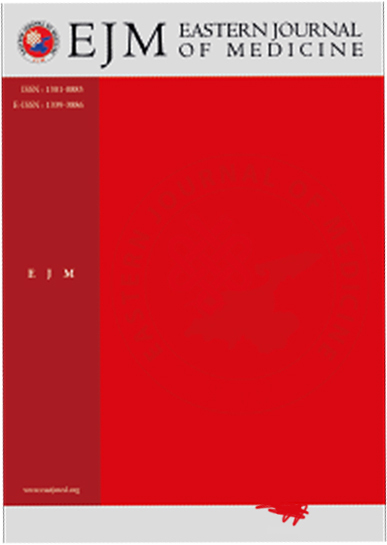Comparison of percutaneous nephrolithotomy complications according to the modified clavien classification during and after the learning curve
Kerem Taken1, Müslüm Ergün2, Recep Eryılmaz3, Sait Yamiş4, Mustafa Gunes1, Ilhan Gecit1, Kadir Ceylan512
3
4
5
The aim of the study was to compare the percutaneous nephrolithotomy (PCNL) complications according to the modified clavien classification during and after the learning curve. In our study, PCNL procedures were applied to 275 patients between May 2010 and June 2014. The complications were retrospectively compared according to the Modified Clavien Classification during and after the learning curve. The first 50 cases were defined as the learning curve and referred to as Group-1 and the following cases as Group-2. We performed 294 PCNL applications on a total of 275 patients. The average duration of surgery was 120 (65-230 min.-max.) minutes and 80.2 (20-140 min.-max.) minutes in Group-1 and in Group-2, respectively (p<0.05). When complications, following PCNL, were evaluated according to the modified Clavien classification, grade I, II, IIIa, IIIb, Iva, Ivb, and V complications were observed in 12 (15%), 54 (67.5%), 10 (12.5%), 4 (5%), 0 (0%), 0 (0%), and 0 (0%) patients of group 1, respectively. When group 2 was evaluated, grade I, II, IIIa, IIIb, Iva, Ivb, and V complications were observed in 24 (12.4%), 132 (68.4%), 30 (15.5%), 6 (3.1%), 1 (0.5%), 1 (0.5%), and 0 (0%) patients, respectively. Grade-5 complication was not observed in any of our patients. The Modified Clavien Classification may be useful for the comparison of PCNL complications during and after the learning curve for reporting outcomes.
Keywords: Percutaneous nephrolithotomy, Modified-Clavien, Complications, learning curveManuscript Language: English














